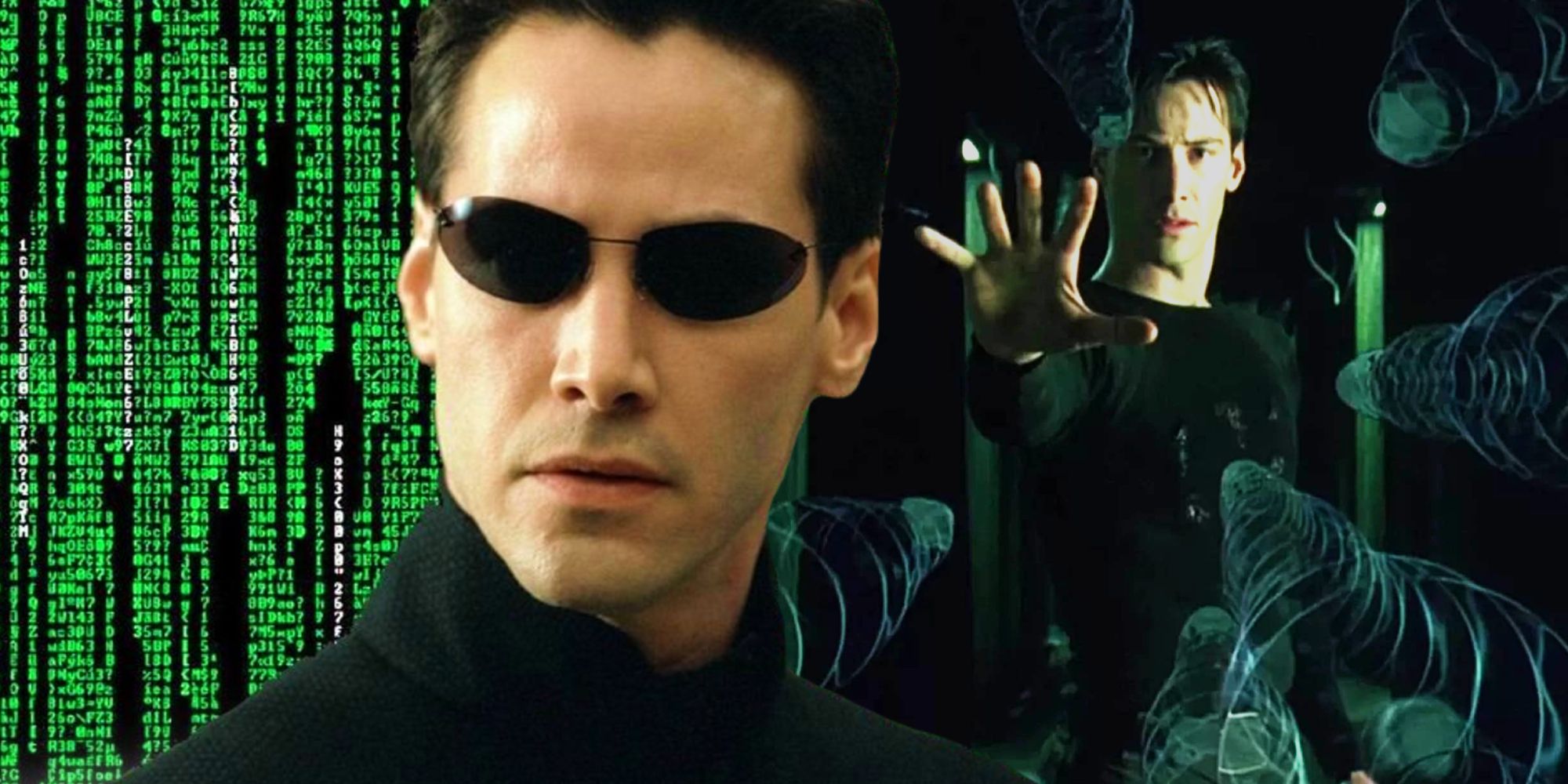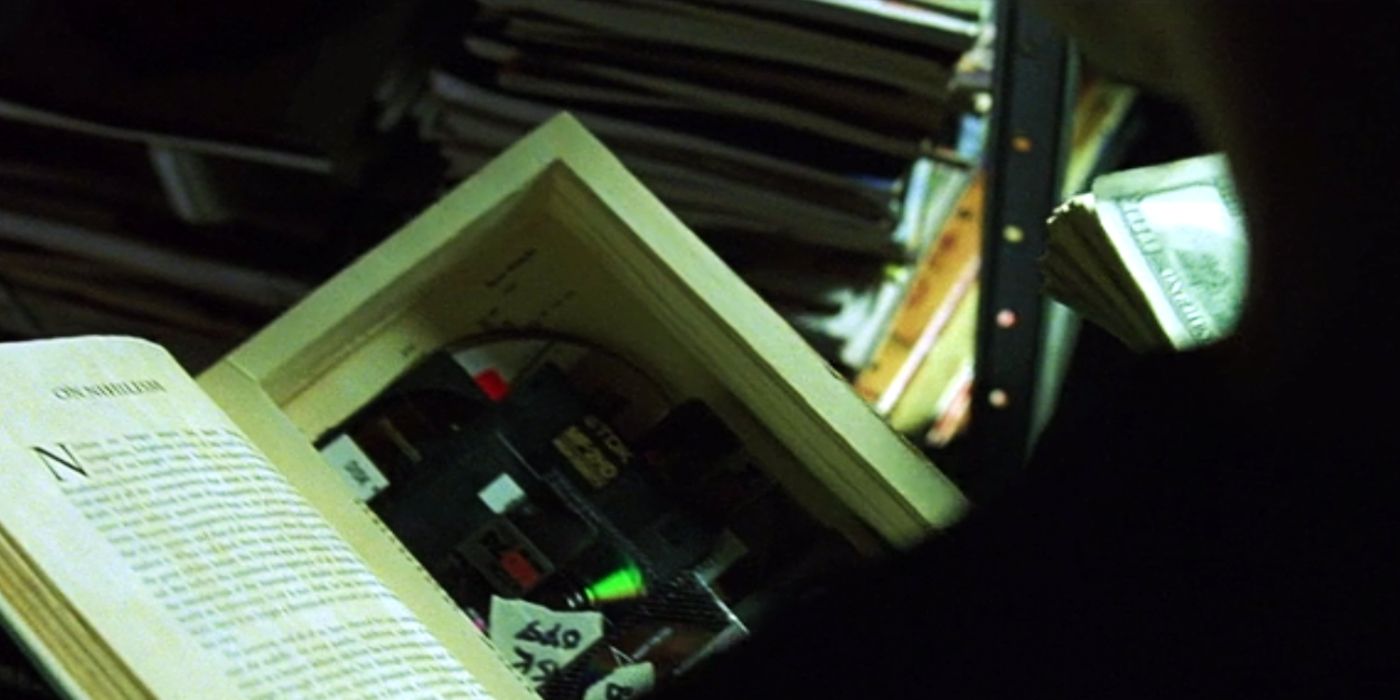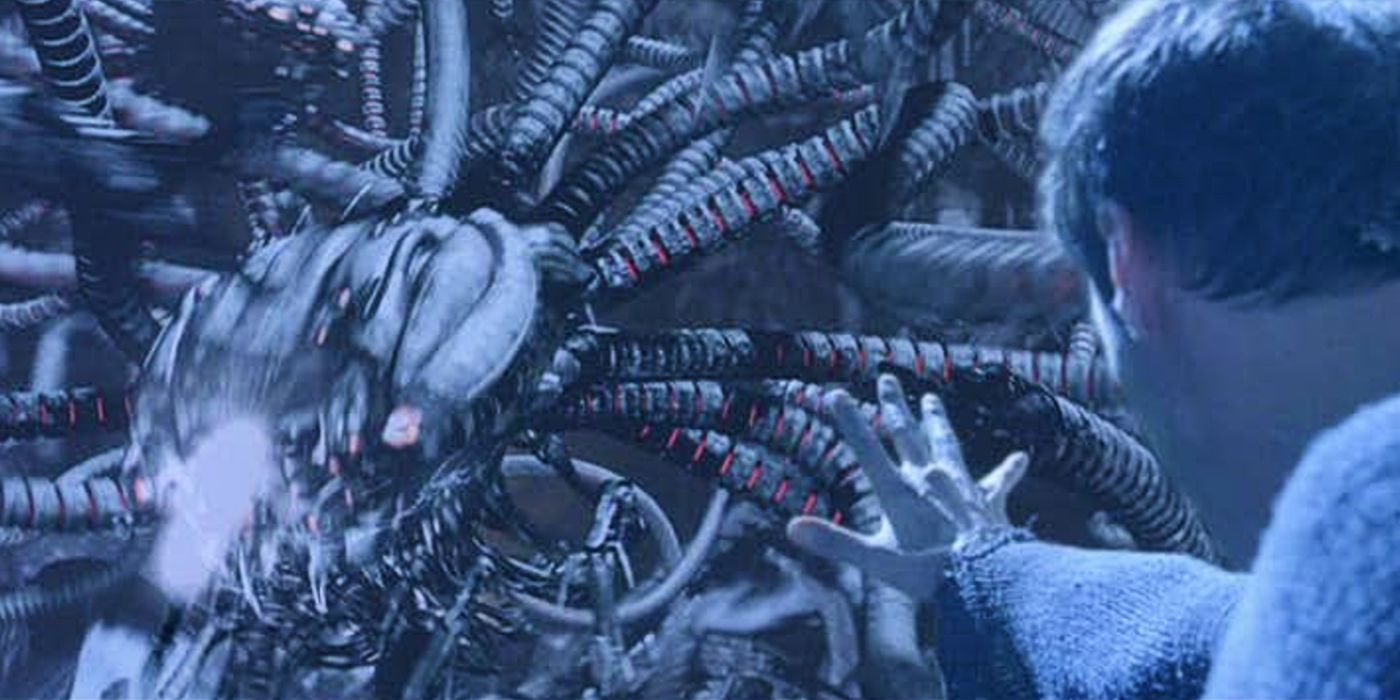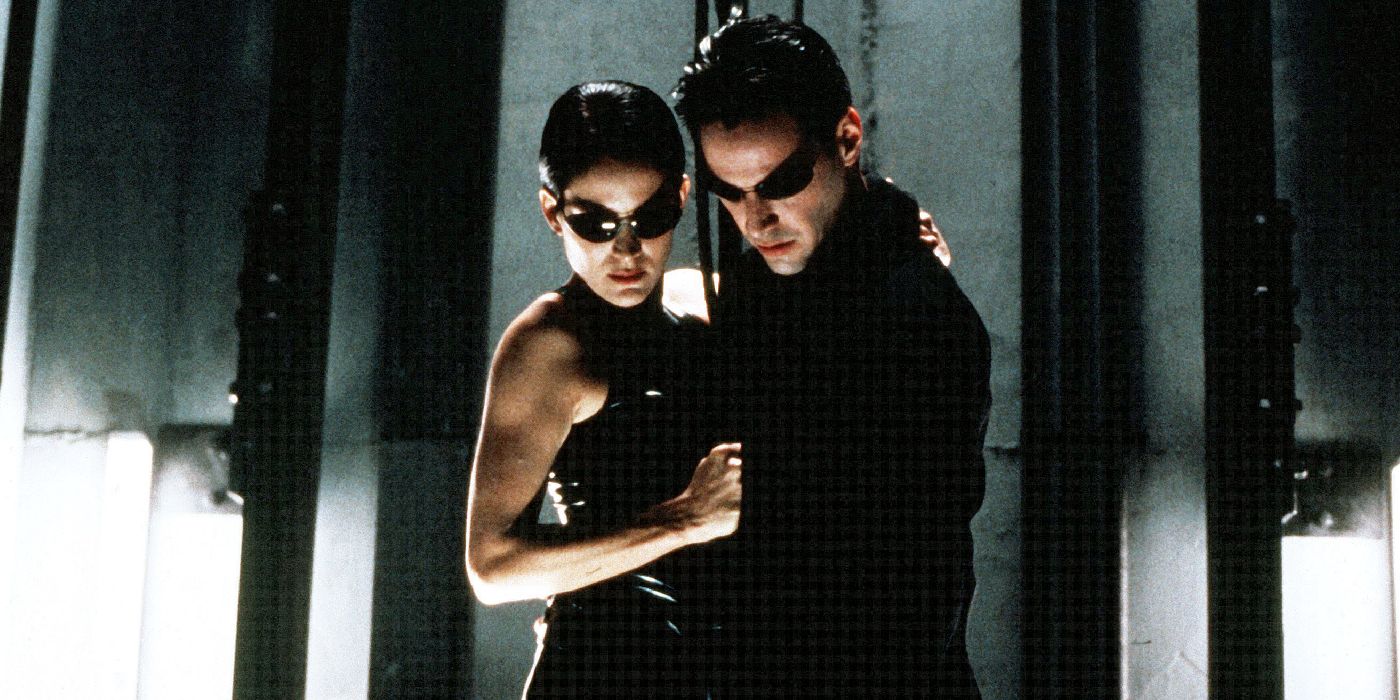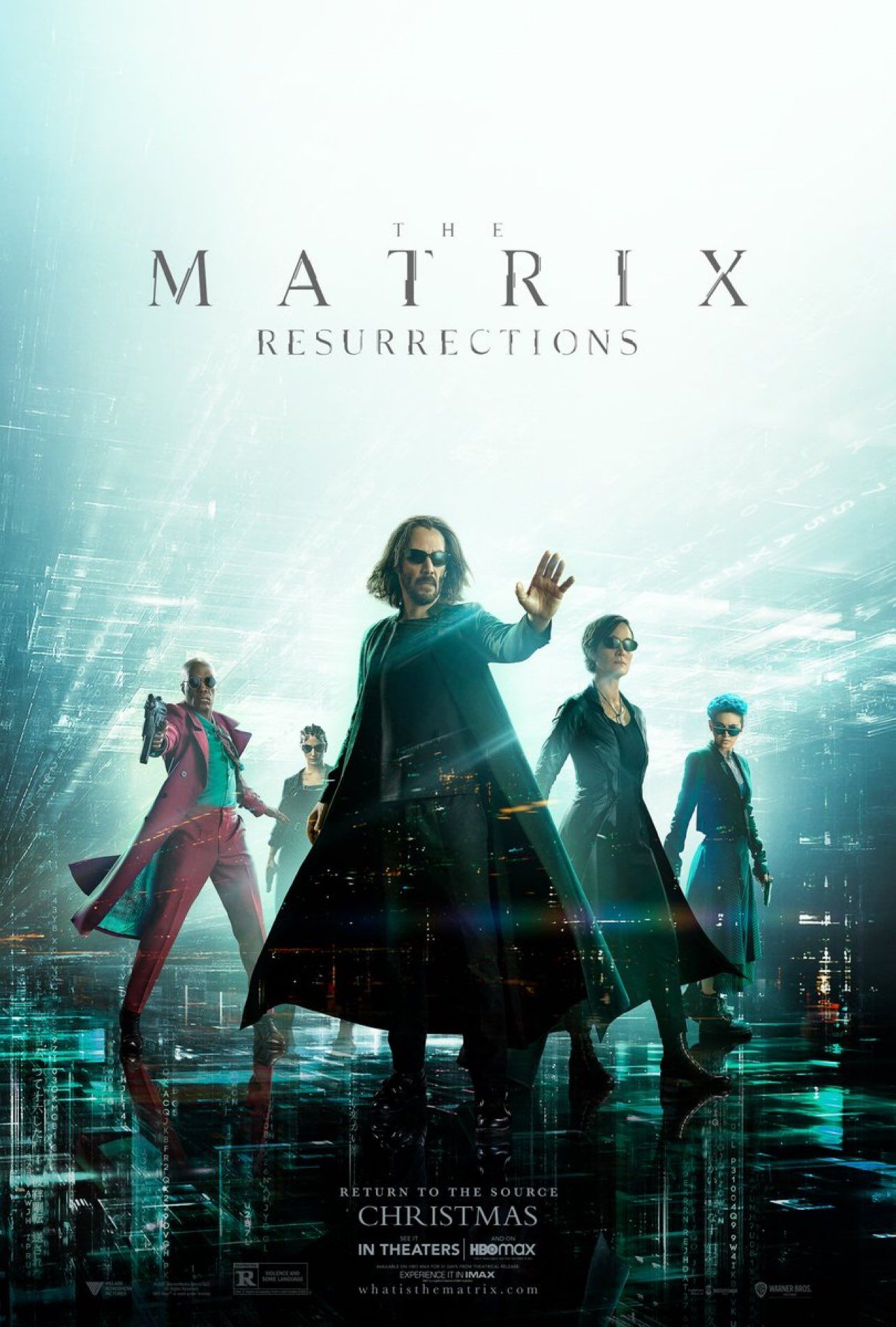The Matrix franchise is rife with theories, key among them being that the real world is yet another level in the simulation as a whole. While this assumption does topple a plethora of plot points and retracts meaning attached to character motivations, the matrix in a matrix theory is plausible when measured against the franchise’s key inspiration. This theory might just unfold in the highly-anticipated The Matrix 4, which harkens the return of Neo and the onset of a potential Machine War, albeit with added stakes.
The Matrix trilogy makes several connections to French sociologist Jean Baudrillard’s Simulacra and Simulation, which is essentially the loose basis for the franchise’s overarching simulation theory. Baudrillard’s work is used as a literal prop in the first film, wherein Neo uses the hollowed text to keep cash and key computer files, with the chapter “On Nihilism” near the center of the book instead of the end, as it is in reality. The presence of this out-of-place chapter is perhaps one of the many clues that point towards the fabricated nature of the matrix, which is aptly described by Morpheus as “the desert of the real.”
The matrix within a matrix theory was popular fan speculation after the release of The Matrix Reloaded, which posited that the real world is, in fact, not real at all, but yet another layer of simulated reality. The implications of this theory are far-reaching, as it would potentially mean that The Resistance is a lie and that Neo’s sacrifice holds no true value at the end of Revolutions. What does this theory mean, and how does it hold up in tandem with the upcoming The Matrix 4?
Understanding Simulacra and Simulation - The Desert of the Real
While Baudrillard’s work differs greatly from the tenets of The Matrix, there are some basic theories about the nature of reality that are mirrored in both works. Simulacra and Simulation talks about the precedences of images and signs, which have essentially replaced and altered our understanding of reality. Arguing in that vein, Baudrillard posits that reality, as we know it, is simply a simulation of what we understand as real, as the world is saturated with hyperreal imagery and symbolism - signs which are often larger than life. When applied to the real world in The Matrix, where Neo and the others operate most of the time, it paints Zion in a completely new light, as the city appears more hyperreal over the course of time.
If the real world is, in fact, another level in the simulation, it lines up with Baudrillard’s theory that the alien nature of reality permeates human perception with apathy and eroding hope, which is reflected in the actions of Cypher in the movies. Despite being a redpill, Cypher rejects the real world due to the abject terrors associated with it, acting with apathy towards his crew in favor of the lull of an even deeper layer of dissociation - the matrix. Could the real world be deliberately designed by the Machines in a cold, brutish, subterranean way in order to posit the matrix-world as the more desirable one? Despite being an apparent reflection of reality, Zion feels utterly alien in nature, almost hyperreal in the way it functions. This could also tie in which the planned emergence of the Cypherites, who are vehemently opposed to the awakening of humans to reality.
Every Clue That The Real World Is Just Another Simulation
Longtime fans of the matrix within a matrix theory argue that several plot points in The Matrix Reloaded definitely point towards the fact that the real world is yet another “level” fashioned by the Machines. One of the biggest clues that validate this theory is the way in which Neo is able to utilize his powers in the real world, going as far as to disable the Sentinels with the aid of telekinesis, which can be interpreted as the manipulation of reality. While it is granted that Neo is The One, it is important to remember that the sheer concept of the One, along with the prophecy, is a fabrication by the Machine world to further control reality. Understanding the innate human urge for conflict, hope, and the illusion of choice, the Machine World fashioned the emergence of a messiah figure, a deliberate glitch in the matrix designed to work in their favor.
Although Neo does break the established mold of the One by defeating Agent Smith and striking a deal with the Machines, it does not explain how he is able to demonstrate superhuman-like abilities in the real world. This is further exacerbated by the fact that Smith manages to possess Bane, who is clearly not a part of the matrix and is a redpill, which persisted even after he is jacked out of the system. Despite the fact that Smith functions as a virus or an anomaly in the system, it is inexplicable as to how he is able to override Bane’s mind completely, which seems plausible if Bane is yet another orchestrated redpill within a simulated layer of reality. Furthermore, we also see Neo enter the real world from the matrix without being jacked in, which hints that the fact that there is some form of wireless data flow between the two planes.
Moreover, as Zion is simply allowed to exist, is it possible that its very existence is a part of a predetermined script? While Zion has always been associated with the last hope for humanity, is it, in fact, yet another prison for redpills who think they’ve escaped simulation? Several hints that the real world is a simulated one can also be gleaned from the Architect’s conversation with Neo. As per theorist Jason Payne, the Architect is not required to guide Neo in his destiny, as it is already a predetermined one, and the fact that an intelligent machine would not factor Neo’s choice within the equation is an unlikely one. Although Neo choosing to not reload the matrix has never been done before, it is unlikely that the Architect would ignore this probability, as, after all, it is borderline inevitable that someone down the line would eventually make the decision to do so.
How The Matrix 4 Could Potentially Lend Authenticity To This Theory
Although the arguments in favor of this theory can be convincing, the matrix within the matrix supposition does cheapen key character choices and the weight that comes with certain decisions. This begs the question as to whether the abovementioned anomalies were deliberate red herrings left in by the Wachowskis, so as to broaden the ambit of possibilities within the dynamic world of The Matrix. Irrespective of whether this theory is true or not, the “reality is a matrix” theory eerily mirrors the scientific possibility of the real world being a simulation, as posited by Nick Bostrom’s probabilistic paper, “Are you living in a computer simulation?” Bostrom opines that the entirety of the physical universe, along with human history, is akin to blips in data stored in a supercomputer or an arc in a video game.
Can the same be said of the events of The Matrix? This question can only be answered by the upcoming The Matrix 4, which will delve into the future of the human-machine dynamic, and the ways in which both worlds evolve with the changes. Is Neo’s return prompted by the epic revelation that the real world was a simulation all this while, which could potentially explain the fact that he is alive despite total annihilation? This can also be applied to Trinity’s presence in the film, who, as per some fans, could be revealed as a program designed to fall in love with Neo, triggering the machine-human truce as a part of a planned eventuality. However, if this is indeed true, a huge question of authenticity will haunt the trilogy as a whole, reducing the emotionally-driven experiences of the characters to a cruel machination, a dream within a dream.

